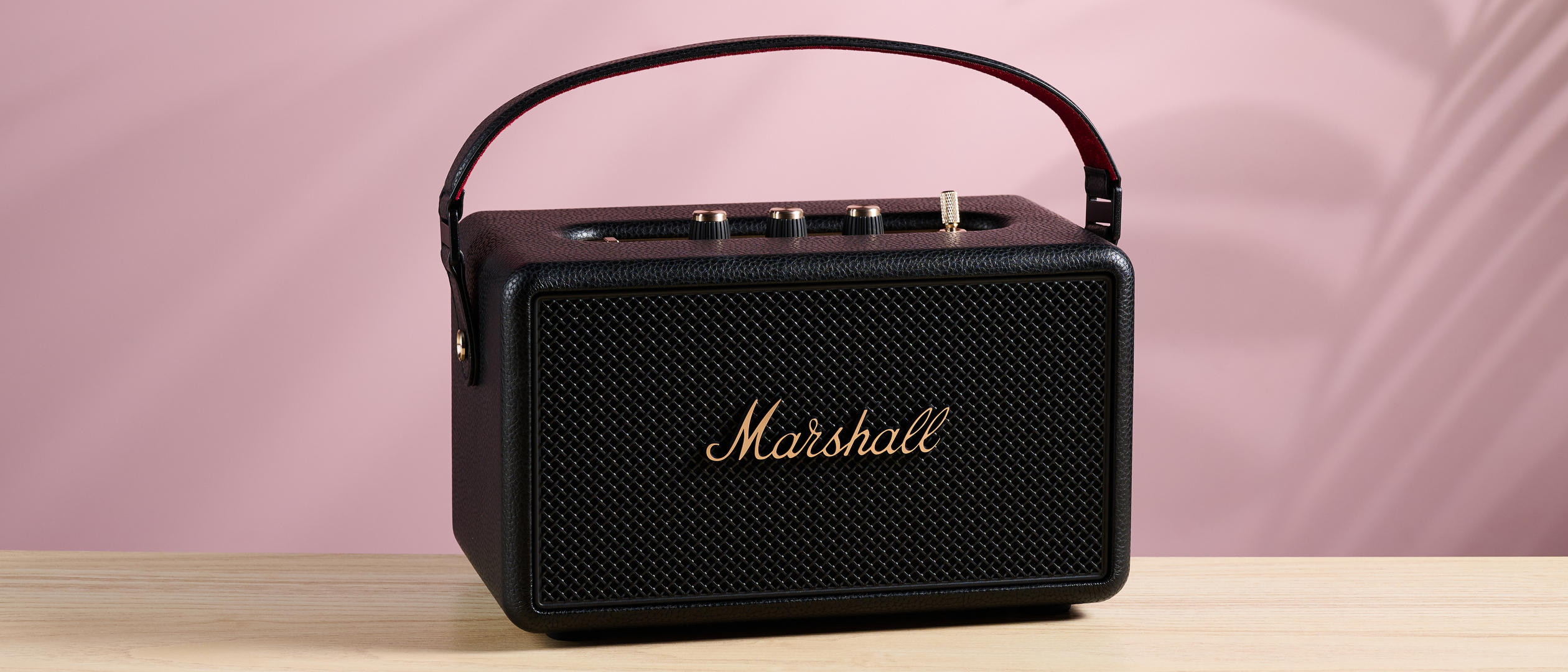TechRadar Verdict
The Marshall Kilburn III plates up a delicious meal, composed of well-seasoned audio, meaty features and a beautiful presentation. With a 50-hour battery life, you’ll barely ever need to charge it, and you can really make the speaker your own with the nifty Marshall companion app. Sure, it’s more costly than its predecessor at launch, and you can get better protection against the elements from rivals, but the Kilburn III is still one of the best-sounding (and looking) models in its weight class.
Pros
- +
Exquisite sound quality
- +
Jaw-droppingly good battery life
- +
Classy amp-inspired design
Cons
- -
A lot pricier than its predecessor
- -
Waterproofing could be better
- -
No higher-resolution Bluetooth codecs
Why you can trust TechRadar
Marshall Kilburn III: two-minute review
The Marshall Kilburn III is the latest entry in the brand's mid-sized Bluetooth speaker range, aiming to combine huge, impactful audio with a pleasingly portable design. It’s also a model that hopes to outdo its predecessor, delivering far superior battery life, refined looks, and revamped acoustics. But that all comes with quite a bump up in price. So, is the Kilburn III truly worth the additional spend?
Well, given the truly swathing improvements across the board, I honestly believe that the answer is "yes". Some of the upgrades here are totally game-changing, none more so than the boost to battery life. The Marshall Kilburn III can offer 50 hours – yes, 50 hours – of playtime, which is more than double its predecessor, at just over 20 hours. That bolstered battery life means that the Kilburn III has more playtime than any other Marshall speaker – and far more than the majority of competition in this size and price category.
What really makes this model stand out – even compared to some of the best Bluetooth speakers – is its stellar audio performance. But let me be clear, other enhancements, such as an IP54 dust- and water-resistance rating, sleeker overall build and a premium gold control panel all come together to make the Kilburn III so much better than its predecessor, the Marshall Kilburn II.
Yes, the Kilburn III has fully reengineered acoustics, as well as bolstered 360-degree stereophonic sound. And the results from these adjustments are astonishingly good. This speaker served up incredibly clean, impactful bass, fantastically expressive mids, and energetic treble. No matter the genre of music you throw at it – it could be classical, it could be house, it could be rock – the Kilburn III nails it all, with beautifully full-sounding, omni-directional audio that’s seriously addictive.
It's also super-easy to adjust sound to your taste, either using the tactile knobs on top of the speaker, or via the Marshall app. The companion software opens up a number of EQ presets, a five-band equalizer, and even Placement Compensation, which optimizes audio for your space. It really is so easy to forge a sound that’s tailored to you, wherever you’re listening.
There are a bunch more features to unlock, too, such as battery preservation, Auracast, and charging bank functionality – which enables you to charge your phone through the Kilburn III’s USB-C port.
Arguably, though, the biggest draw of this model is its stunning looks. We’ve come to expect boundless beauty from Marshall over the years, with its eye-catching retro, amp-inspired design work translating beautifully into the world of speakers, headphones, and now even soundbars, following the launch of the five star-rated Marshall Heston 120. And it's no different with the Kilburn III.
Sign up for breaking news, reviews, opinion, top tech deals, and more.
Unlike the Kilburn II, gorgeous golden details used here for the logo and the controls really hammer home a premium feel. Pair that with neat speaker grilles on the front and reverse sides, pleasant knob and switch controls, as well as a red velvet-infused strap, and you’re looking at a masterclass in design.
The catch, as I flagged earlier, is that you’ll have to splash a fair amount of cash for the Kilburn III’s services. It will set you back $379 / £299 / AU$599 – which is by no means cheap. And it's also $80 / £50 / AU$100 more than the Kilburn II cost at launch. Having said that, the improvements are seismic and this is a model that's right up there with premium rivals such as the Sonos Move 2 and Bose SoundLink Max.
All in all, the Marshall Kilburn III is an exemplary Bluetooth speaker that absolutely aces everything that matters most. Amazing sound? Check. Luxury looks? Check. And a tasty set of features? Also, check.
Sure, if you want an option that’s perfect for taking to the beach, its IP54 durability may not quite do the trick, and I’d point you in the direction of our best waterproof speakers guide. But if you want a true statement piece with class-leading battery life and audacious audio, this is one of the best Bluetooth speakers on the market.
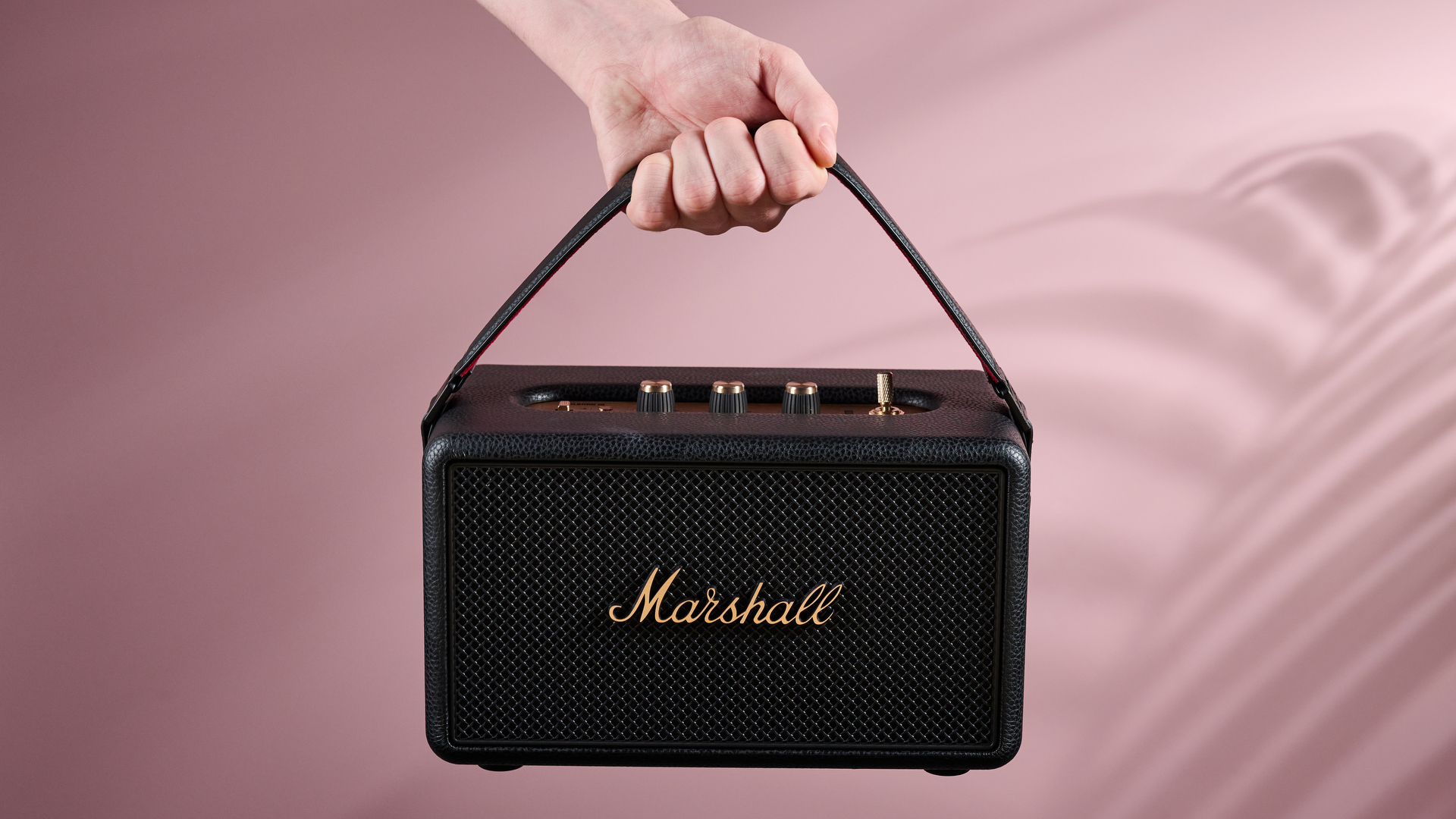
Marshall Kilburn III review: price and release date
- $379 / £299 / AU$599
- Launched in May 2025
The Marshall Kilburn III first released at the end of May 2025, almost seven years after its predecessor, the Kilburn II. It has a list price of $379 / £299 / AU$599, which is $80 / £50 / AU$100 more than the Kilburn II at the point of release. But the price reflects a slew of improvements, which I’ll tackle in depth below.
You can grab the Kilburn III in either Black & Brass or Cream, but the variant you select should have little to no impact on the price you pay for the speaker.
Marshall Kilburn III review: specs
Weight | 6.2lbs / 2.8kg |
Dimensions | 10.7 x 5.9 x 6.7 inches / 273 x 150 x 169mm |
Connectivity | Bluetooth 5.3, AUX |
Battery life | 50 hours |
Speaker drivers | 1x 30W woofer; 2x 10W full ranges |
Waterproofing | IP54 |
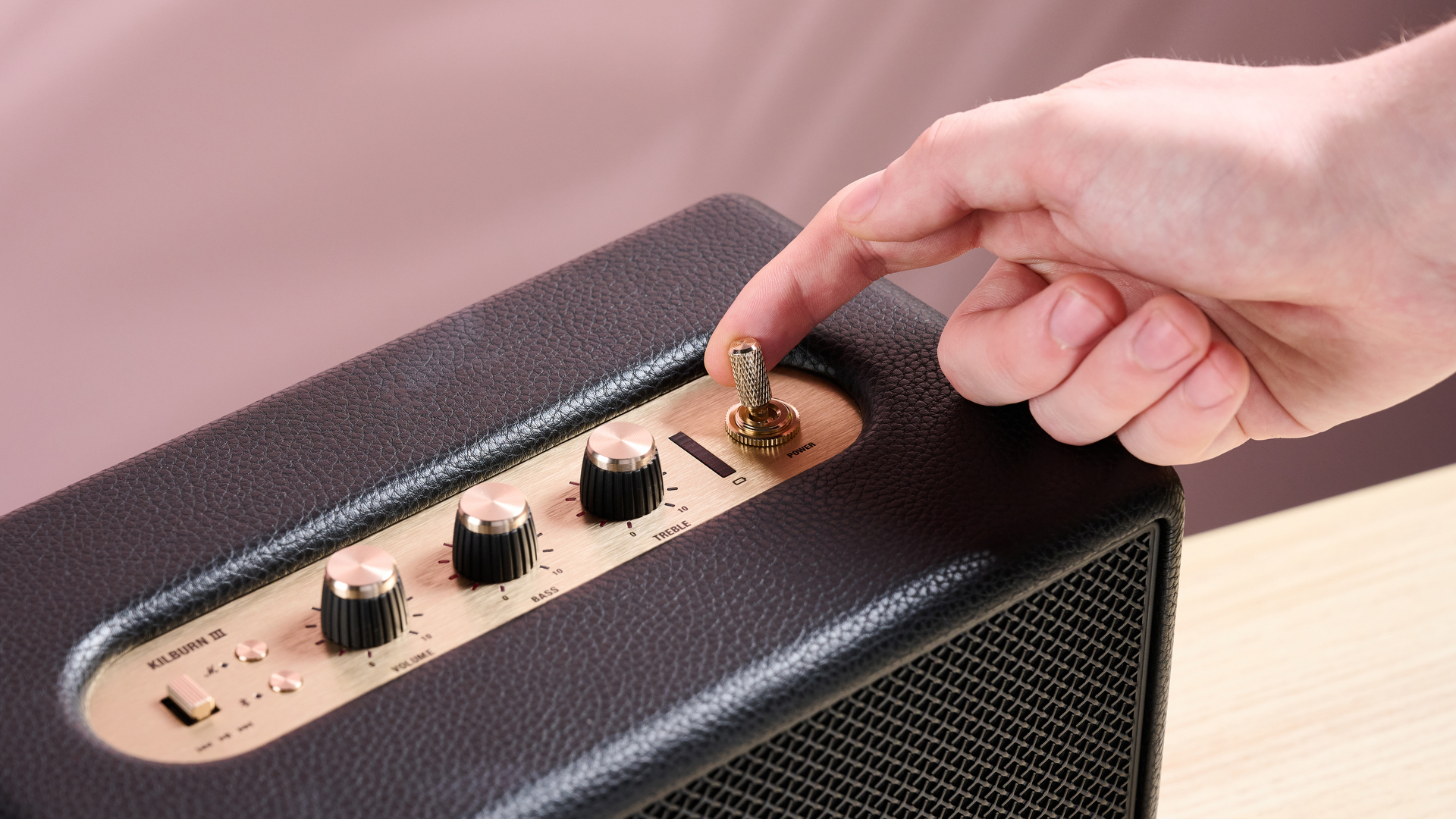
Marshall Kilburn III review: features
- Effective Placement Compensation
- Nifty companion app with decent EQ options
- Colossal battery life
The Marshall Kilburn III has many of the key features you’d be looking for in a modern Bluetooth speaker. You get all the basics, such as multi-point connectivity and fast-pairing, but there’s so much more to unlock in the Marshall app.
For instance, there’s Placement Compensation, where you can state if the speaker is positioned close to an edge, a wall or corner, and the speaker will adapt its audio output accordingly. I tried all of the different calibrations and found that the adjustments all make a significant difference, so ensure that you have the right setup for your space.
There are also some tasty EQ options to sink your teeth into. Yes, gone are the days of simply making adjustments to the bass and treble; Marshall has included a five-band equalizer here, enabling you to make a custom EQ that's to your taste. Alternatively, you can pick from a number of presets, such as bass, mid, and treble boost.
Some other nuggets include: battery preservation options, such as the choice to lower charging speed if temperature is outside the ideal range; Auracast broadcast tune-in; and M-button customization, which enables you to alter the function of the "M" shortcut on the speaker’s control panel.
The bottom line is, all of the crucial features are present – and super-easy to play around with in the Marshall app. Although, there are a few omissions that you’ll find on rival speakers.
For instance, there’s no built-in mic for high-quality, hands-free calling, something you’ll find on a model such as the Sony ULT Field 3. In addition, there’s no multi-speaker pairing (ie. no JBL PartyBoost equivalent), so if 100% volume isn’t enough or you want to create a multi-room setup over Bluetooth, it may be worth checking out a larger option in our guide to the best party speakers. I don’t typically keep multiple units of the same speaker at hand, and I prefer to keep calls more private, meaning neither of these missing features bothered me all too much.
Perhaps the best feature of this speaker, though, is its ridiculously long battery life. It delivers 50 hours of playtime, which is far, far more than most rivals in its price and weight class. Even the brilliant JBL Xtreme 4 can only just knock out 30 hours with PlayTime Boost active. Combine that with the ability to charge external devices via the speaker’s USB-C port, and you’re looking at a true powerhouse.
- Features score: 4.5/5
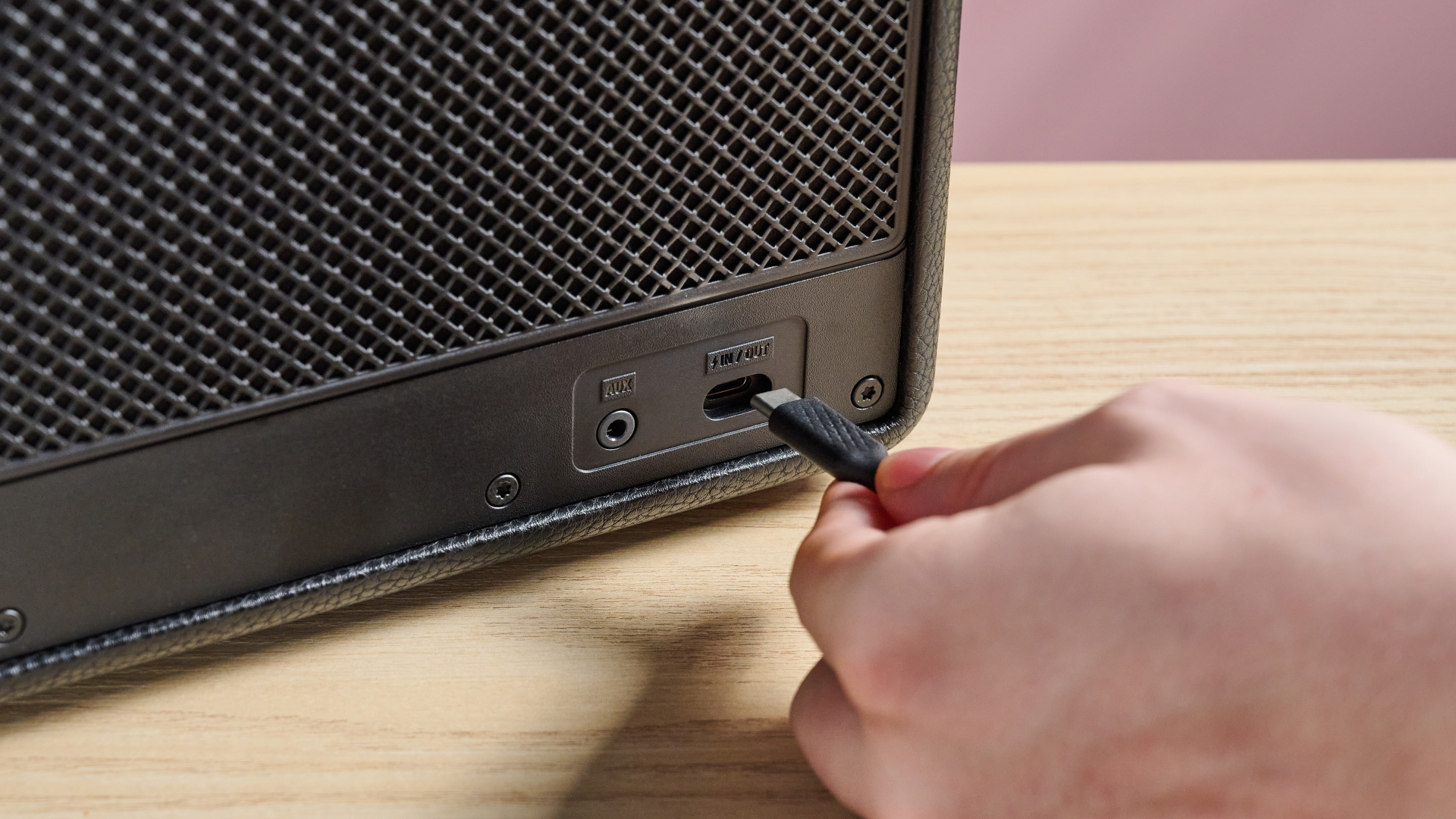
Marshall Kilburn III review: sound quality
- "True" 360-degree stereophonic sound
- Incredible bass output
- But overall sound is still brilliantly balanced
I was lucky enough to have the chance to try the Kilburn III out early at Marshall’s HQ in Stockholm, Sweden, so I already had a decent idea of this speaker’s talents. However, having spent a bit more time with it at our music testing room at Future Labs, I have realized that the Kilburn III is even better than I’d first thought.
One of the first things that struck me about this speaker was its booming bass output – something I also loved about the brand’s Heston 120 soundbar. When blasting Keep That Groove by Vitess, the pumping low-end was translated ultra-cleanly, with no noticeable distortion or muffling. Bass didn't ever overpower synths or vocals, and I didn’t even feel the need to activate the Bass Boost EQ mode!
The Kilburn III treated me to clear audio, even when I pumped out the tunes seriously loudly. For instance, when playing One-Winged Angel by Nobuo Uematsu, the piercing strings, ominous bass drums, and fear-inducing vocals culminated beautifully, never outshining one another. This is in part thanks to the Kilburn III’s dynamic loudness tech, which automatically adjusts bass, mids, and treble, so you don’t lose out on any detail.
Speaking of which, the Kilburn III is able to put up a pleasingly intricate performance, even though it lacks any "hi-res" Bluetooth codec support such as LDAC or aptX Adaptive. Leading sax from In The Pocket by Eric Darius danced through our testing room, sounding tonally accurate and unrestricted, resulting in a nuanced and expressive interpretation of the track. And thanks to the speaker’s "true" stereophonic sound, it didn’t matter where I was listening from – I got full-sounding, clear audio at every angle.
Even instrument separation surprised me after throwing on Vantablack by Intervals, with in-your-face electric guitar sounds well defined in the mix, even with a deep, powerful bassline and thrashing drums running throughout.
I really did throw a huge variety of tracks at the Kilburn III, and I was truly blown away by its ability to effortlessly handle anything sent its way.
With an all-action rock banger such as Are You Gonna Go My Way by Lenny Kravitz, intertwining guitars sounded satisfyingly forward, with drums expertly positioned for a next-level listening experience. And with an upbeat dance track – something perhaps not associated with Marshall – such as A Fresh Energy by Gaskin, pumping bass was never lethargic, while higher-pitched percussive elements came through with incredible vibrancy.
The Kilburn III really is a Jack of all trades…but it's also a master of each one.
- Sound quality score: 5/5
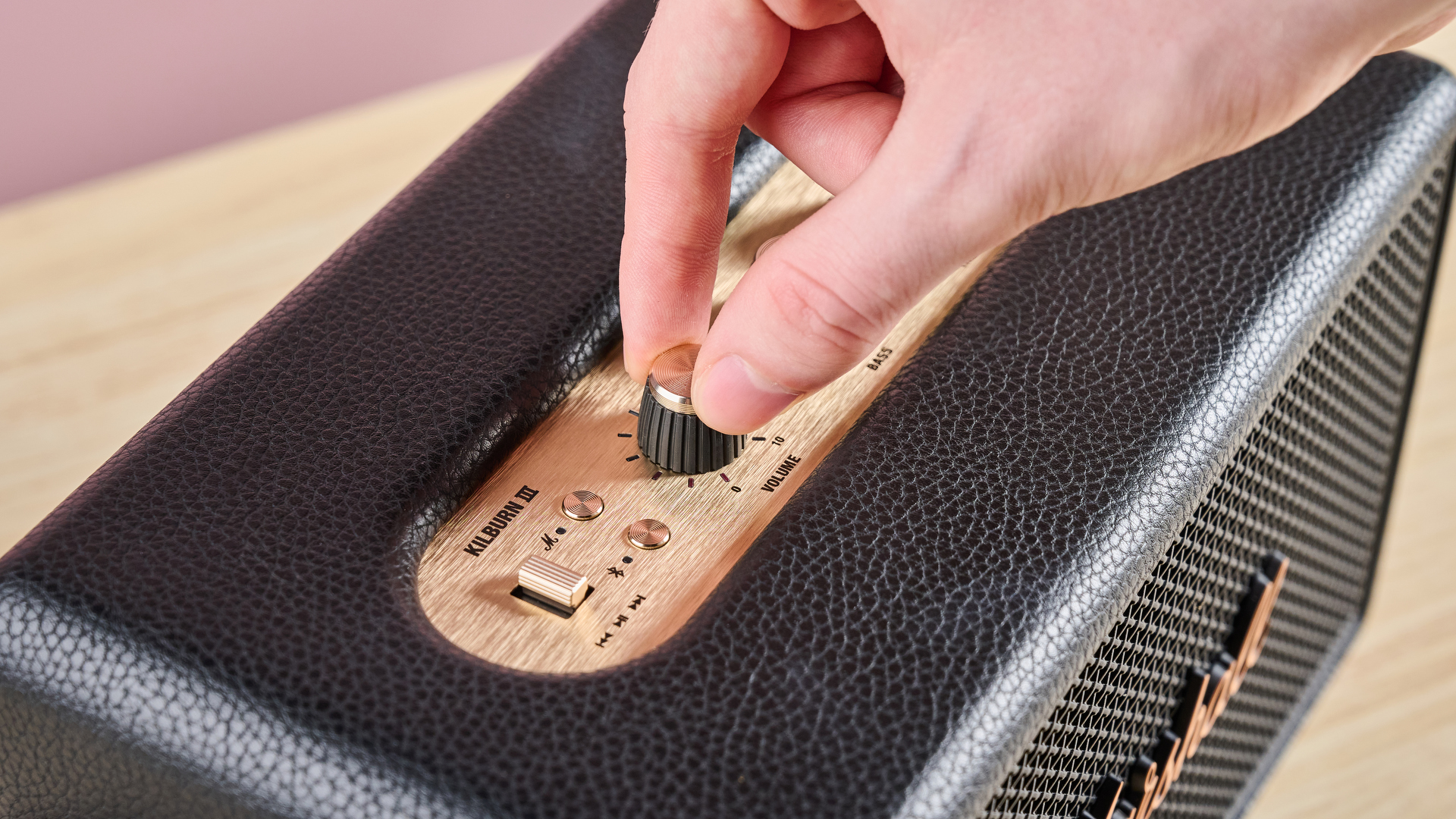
Marshall Kilburn III review: design
- Stunning amp-inspired looks
- Excellent physical controls
- IP54 waterproofing is better, but nothing special
I already own the Marshall Stanmore III and have always adored the way it looks in my living room setup. I just love the retro feel of the amp-inspired design Marshall uses for its speakers, so you won’t be shocked to hear I very much like the look of the Kilburn III.
It has a premium-looking faux leather outercasing, stunningly finished speaker grilles on its front and reverse side, a gold-plated control panel, and sleek handle that has a red velvet underside. I didn’t so much like the white logo and black control panel on the Kilburn II – but this new model feels far more high-end, and it's one that is going to look like a true statement piece in any living space.
When I spoke to Marshall about the Kilburn III, that sense of the speaker being a "statement piece" was strong in the mind. I was assured that the speaker wasn't meant to compete with the company's rugged models – think the Marshall Middleton or Marshall Emberton III. And that may explain its sort of "meh" waterproof rating.
The Kilburn III is just IP54 dust- and waterproof-rated, meaning it's only really protected against splashing water, not water jets or full on submersion. Of course, a lot of portable Bluetooth speakers are now IP67-rated – sometimes higher – so if you’re looking for the most rough-and-ready model around, you should probably look elsewhere.
Regardless, there are other design aspects of the Kilburn III of which I am a fan. First of all, the tactile knobs on top of the speaker are incredibly effective and well built. You can alter volume, bass, or treble levels with these. There’s also a pin control, which makes a return from other Marshall models, for switching the speaker on or off. Perhaps the most interesting physical control, though, is the "M" button, which can be set to a variety of functions – such as sifting through EQ options – via the Marshall app.
On the reverse side of the speaker, you'll also find a USB-C port to charge the speaker or external devices, as well as a 3.5mm AUX port if you want to indulge in wired listening.
- Design score: 4.5/5
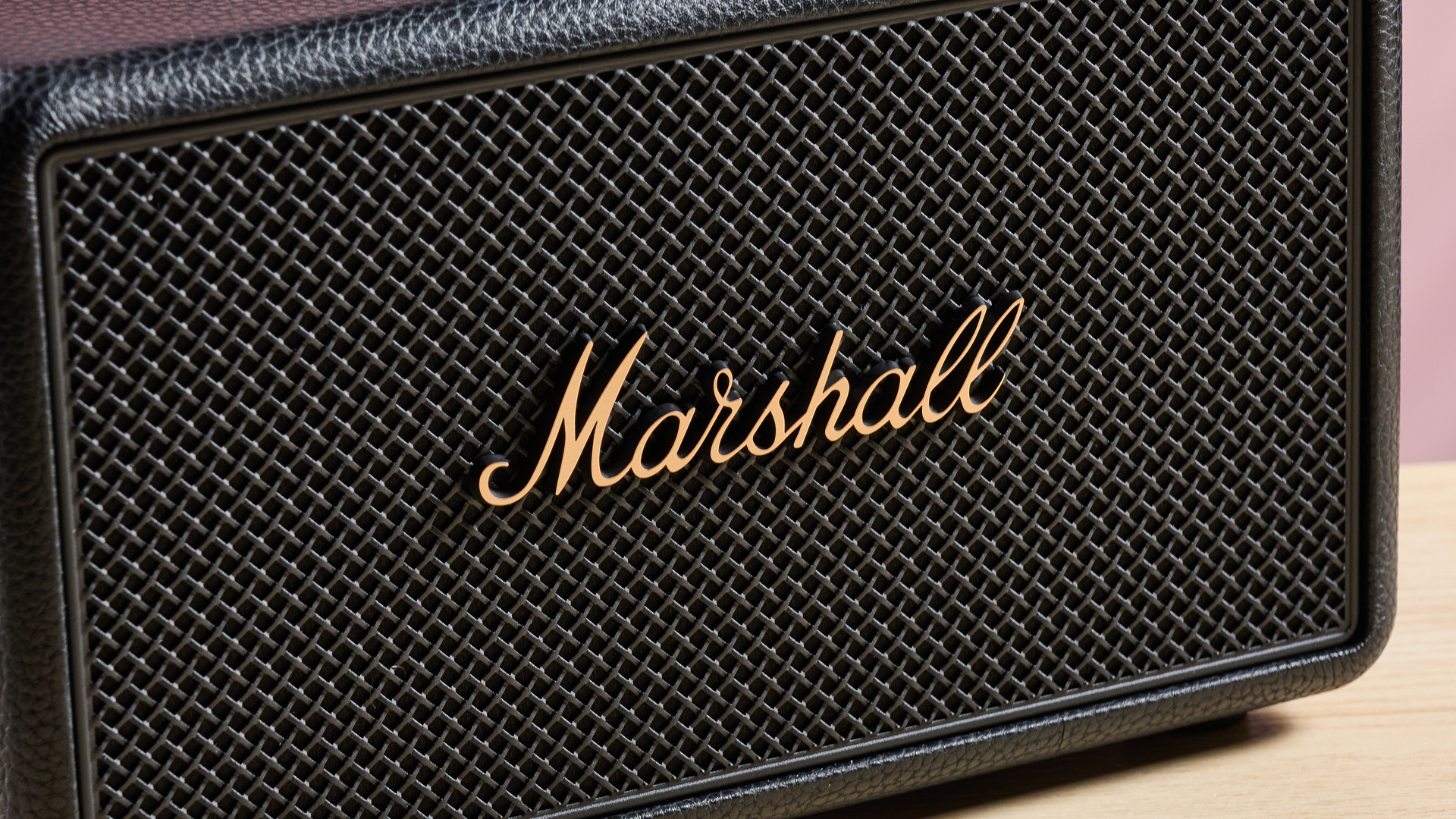
Marshall Kilburn III review: value
- More expensive than its predecessor…
- …but a seismic improvement across the board
- Well-priced against rivals
I’ve flagged it a couple of times in this review, but the Marshall Kilburn III is significantly more expensive than its predecessor. Given the sheer scale and breadth of improvements, though, I think it’s totally worth it.
Battery life is much improved, it has a more premium design, and the re-engineered acoustics have taken the revamped Kilburn to new heights. Even around that $400 / £300 / AU$600 zone, it sounds well-worth every penny.
And even against some similar-sized competitors, I wouldn’t consider the Kilburn III to be overpriced. For instance, 2024’s JBL Xtreme 4 launched at $379 / £329 / AU$499, and after testing both models side-by-side, I'd give Marshall’s effort the slight edge sonically. Of course, given its age, you can often find the JBL Xtreme 4 on sale now, though.
On top of that, this model is cheaper than the Bose SoundLink Max at the point of release, which often still goes for the full $399 / £399 / AU$599. So, the Kilburn III is far from the priciest in its weight class.
- Value score: 4.5/5
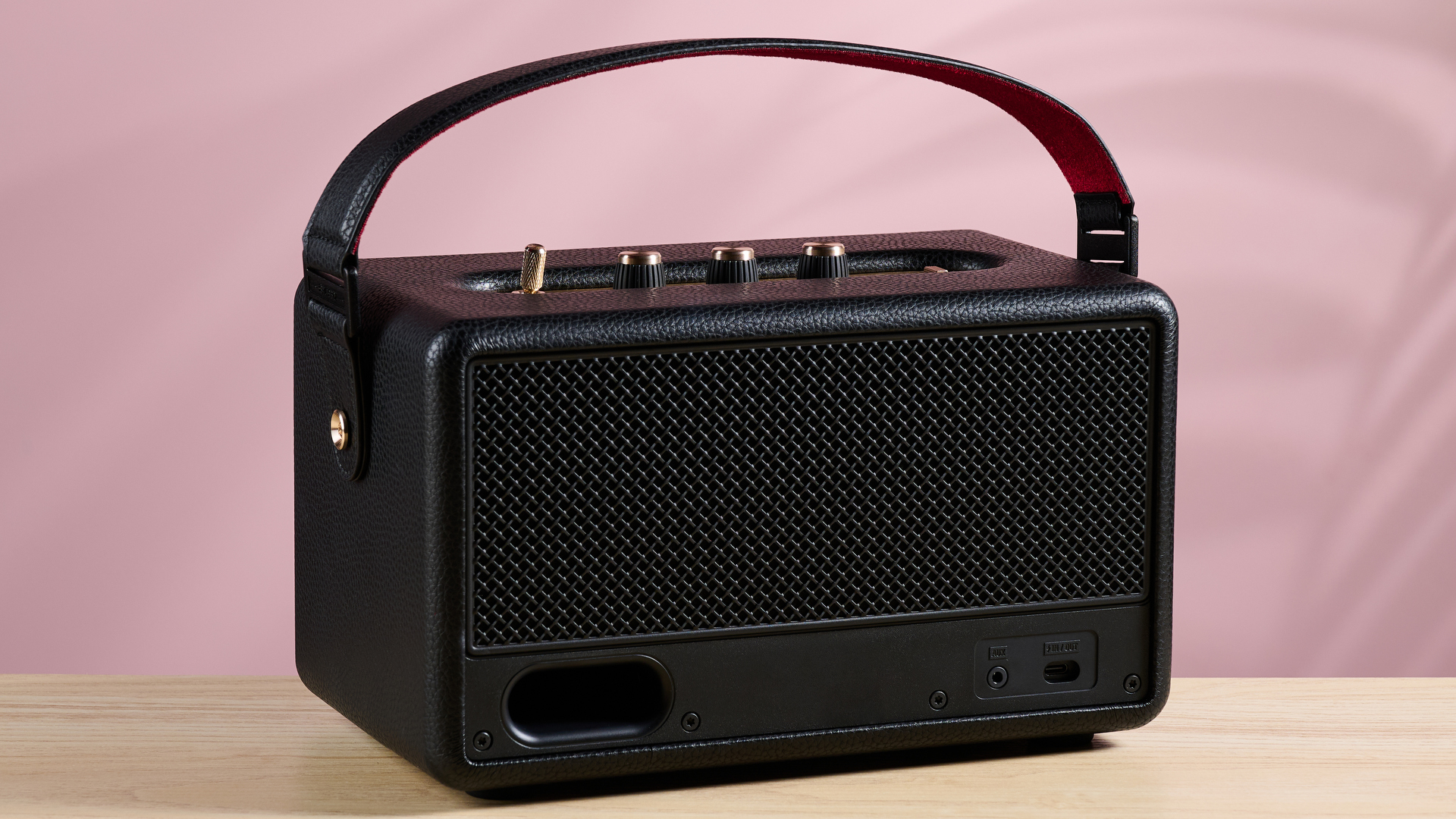
Should I buy the Marshall Kilburn III?
Attributes | Notes | Rating |
|---|---|---|
Features | Some small omissions can’t overshadow amazing battery life and in-app functions. | 4.5/5 |
Sound quality | Beautifully balanced audio even at high volumes, no matter the listening angle. | 5/5 |
Design | Attractive amp-inspired design with gorgeous golden details. | 4.5/5 |
Value | A price bump over its predecessor, but sounds, looks, and feels well-worth it. | 4.5/5 |
Buy it if...
You love the Marshall aesthetic
The Kilburn III stays faithful to the traditional Marshall aesthetic with its retro-looking amp-inspired design, adding a golden control panel and logo, upgraded tactile knobs, and a pin-style power switch, to make the Kilburn III a real beauty.
You need plenty of battery life
Arguably the most impressive aspect of this Bluetooth speaker is its outrageously long battery life. With 50 hours of playtime, depending on listening volume, there's more than enough juice to keep the party running into the next day…and maybe the day after that, too.
Don't buy it if...
You’re on a budget
The Marshall Kilburn III is an expensive speaker, and significantly pricier than its predecessor. Of course, I think there's enough to justify that hike; but if you’re on a budget, consider models such as the Anker Soundcore Boom 2 and the Marshall Kilburn II – both of which we’ve tested and enjoyed.
You want a big, powerful party speaker
The Kilburn III can get pretty loud, displaying great bass output given its size. But for gigantic, yet talented, sound, nothing beats the Tribit Stormbox Blast 2. It can even double up as a karaoke machine – what more could you want?
Marshall Kilburn III review: also consider
| Header Cell - Column 0 | Marshall Kilburn III | JBL Xtreme 4 | Bose SoundLink Max |
|---|---|---|---|
Price | $379 / £299 / AU$599 | $379 / £329 / AU$499 | $399 / £399 / AU$599 |
Weight | 6.2lbs / 2.8kg | 4.63 lbs / 2.1kg | 4.7lbs / 2.1kg |
Dimensions | 10.7 x 5.9 x 6.7 inches / 273 x 150 x 169mm | 11.7 x 5.9 x 5.6 inches / 297 x 149 x 141mm | 4.7 x 10.4 x 4.1 inches / 120 x 265 x 105mm |
Connectivity | Bluetooth 5.3, AUX | Bluetooth 5.3 | Bluetooth 5.3 |
Battery life | 50 hours | 24 hours (plus up to 6 hours more with Playtime Boost) | 20 hours |
Speaker drivers | 1 x 30W woofer; 2 x 10W full ranges | 2 x 30W woofers, 2 x 20W tweeters | 2 x 89mm transducers, 1 x 23mm transducer, 2x passive radiators |
Waterproofing | IP54 | IP67 | IP67 |
JBL Xtreme 4
I still rate the JBL Xtreme 4 as one of the best party speakers around. I used it for comparison testing against the Kilburn III, and it still displays that clear, responsive, impactful sound that I remembered from last year. This model is a little more rugged, boasting an IP67 waterproof rating. On top of that, it can be found on sale fairly regularly now, so you should be able to grab it for less than the Kilburn III. Read our full JBL Xtreme 4 review.
Bose SoundLink Max
If you want big, bold, balanced audio, the Bose SoundLink Max is a top-tier option. Again, this one’s IP67-rated, so it’s a little better protected against the elements. It’s gorgeous, too, much like the other speakers in the SoundLink line – but there’s a severe drop off in battery life when you compare this to the Kilburn III. On occasion, you can find the SoundLink Max for $100 / £100 off, so if Bose has your heart, make sure you keep your eyes peeled for a sale. Read our full Bose SoundLink Max review.
Marshall Kilburn III review: how I tested
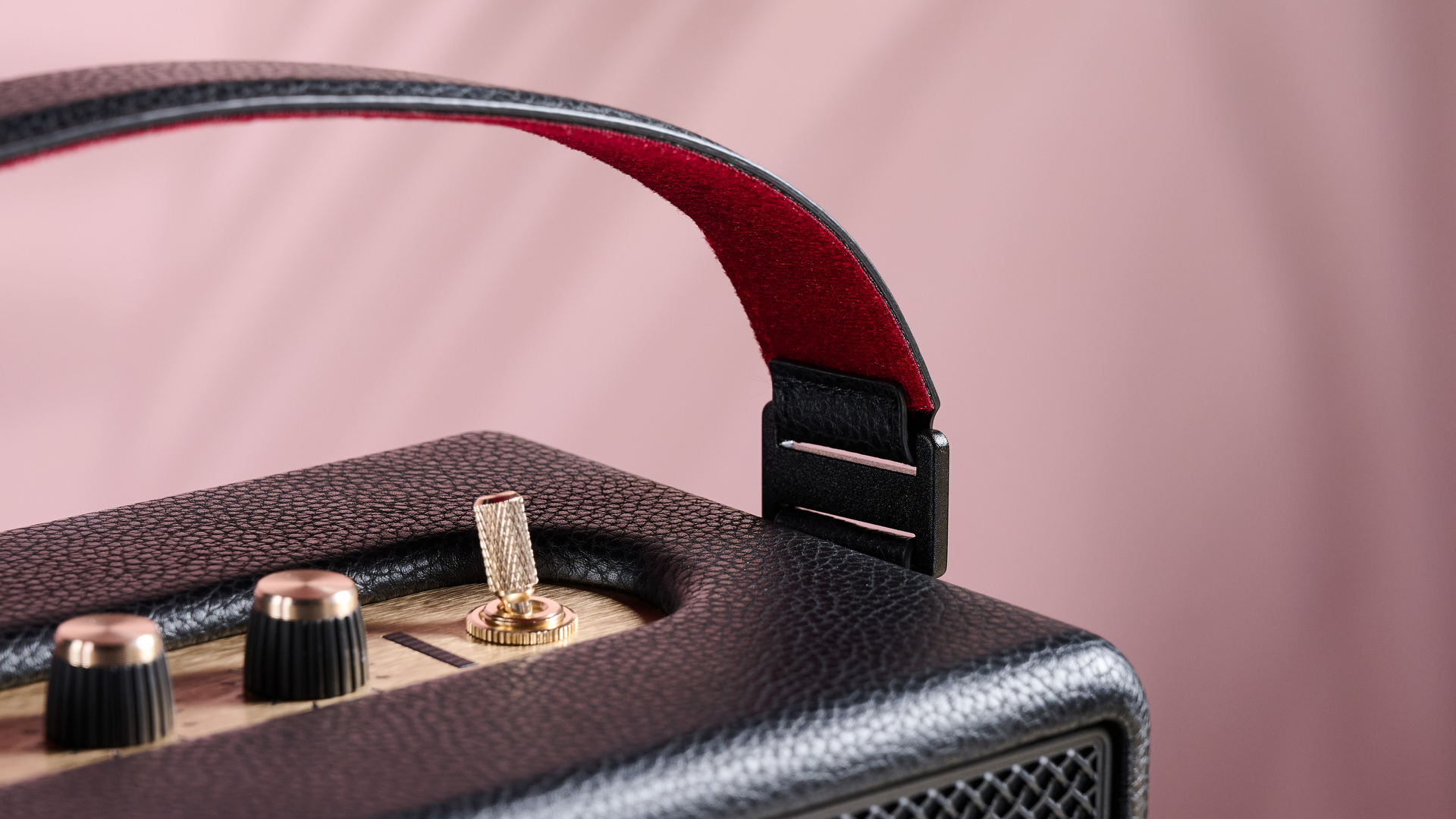
- Tested for one week
- Mainly used in our music testing facility at Future Labs
- Predominantly tested using Tidal
I tested the Marshall Kilburn III over a week-long period, making use of its full set of features, playing hours of music, and assessing all aspects of its design. I mainly used the speaker in our music testing room at Future Labs, so that I could judge audio quality in an isolated, controlled environment.
When blasting tunes, I mainly used Tidal, but I occasionally played songs over Spotify too. As always, I started the testing process by streaming tracks from our carefully curated TechRadar reference playlist, but I also listened to a ton of tracks from my own personal library. I ran a comparison test with the JBL Xtreme 4 to assess aspects such as sub-bass output, instrument separation, and sonic detail.
I’ve tested all sorts of audio equipment during my time at TechRadar, from flagship headphones such as the Sony WH-1000XM6, through to home cinema products such as the Marshall Heston 120. I’ve reviewed an array of speakers along the way from brands such as Sony, JBL, and, of course, Marshall. As a result, I’m more than familiar with the Kilburn III’s rivals, as well as what it takes for a speaker to stand out in a highly competitive market.
- First reviewed: July 2025
- Read more about how we test

Harry is a Reviews Staff Writer for TechRadar. He reviews everything from party speakers to wall chargers and has a particular interest in the worlds of audio and gaming. Harry has a background in business tech journalism, particularly around the telecoms industry.
You must confirm your public display name before commenting
Please logout and then login again, you will then be prompted to enter your display name.
